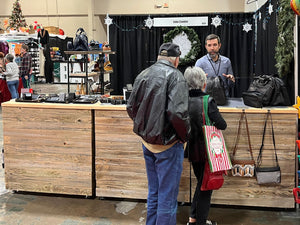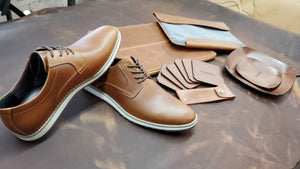
The History of Leather
You may think that the advent of synthetic materials completely consigned leather goods to the dustbin of history, but nothing could be further from the truth. Leathercraft is still an extremely important art today, and cowhide products are used in a wide variety of industries even outside of the realm of fashion. However, professionals who study the history of leather have illustrated that there was a time when it was even more vital for daily tasks than it is today.
Archaeologists aren't entirely sure of just how far back leather goes. It's likely that even the earliest human civilizations tanned cowhide as well as the skins of other animals to produce durable fabrics that could stand up against the hard environments in which they lived. One study found that stone tools were used to work leather as far back as around 3.3 million years ago.
The Origin of Leather Goods
Early hunter-gatherer societies would trap a number of different animals for food, but it's likely that they made use of every part of the carcass. Mammoths probably aren't the animals that normally come to mind when someone is thinking about the field of leathercraft, but neolithic civilizations may very well have tanned the hides of large extinct elephantid organisms. They also collected the bones and tusks of such animals to make tools, which could very well have been used in the tanning process.
Modern leather clothing history began around 400,000 years ago. Dig sites near Hoxne in the United Kingdom have produced remnants of leatherworking tools as well as goods made from hard animal skins. Hard leather boots were among the first pieces of footwear ever made by human civilizations, and these proved extremely important to early settlers who wouldn't have able to traverse inhospitable landscapes without them.
Ancient leather bags gave neolithic farmers the ability to carry seeds and pits with them, which in turn enabled the spread of agriculture. Hunter-gatherer societies began to settle down, and that meant they would need some way to corral their livestock.

Leather Harnesses & Tackle
Saddles and horse tackle became important the moment that people started to domesticate beasts of burden. Oxen used by farmers in North African settlements would have worn leather tackle as would have the earliest livestock used in the Fertile Crescent region. Since farmers could make relatively flexible leather gear without sacrificing its strength, they naturally turned to it.
Gloves and riding pants were often made from softer cuts of leather, which could be comfortably worn without chafing. In some parts of the world, leather started to become seen as a high-value commodity. This could be seen as the beginning of leather fashion history in some ways, though fashionable uses of leathercraft would really come into their own during the Greco-Roman period.
Leather Products in the Greek & Roman Civilizations

Fashionable sandals came into their own during the Hellenistic era, which refers to the spread of Grecian culture throughout the Mediterranean basin after the reign of Alexander the Great. As merchants helped to generate wealth among the oligarchs that ruled Greek-speaking breakaway kingdoms, the demand for higher quality full grain leather goods started to grow. Hairbands and bracers made from harder cuts of full grain leather begin to appear in the historical record around this time. While the history of leather bags and wallets stretches back to the earliest human civilizations, it's clear that buyers from the ascendant Macedonian culture wanted bags that were better looking than any that came before them.
Military uses of leather flourished under the Romans. Lorica segmentata is perhaps the most iconic style of Roman body armor, and it consisted of metal plates attached to leather strips. Various types of straps and ancient leather bags have been found in the remains of encampments from both the republican and imperial periods of Roman rule, thus illustrating how widely it was used at the time.
Civilian applications may have been just as wide spread. Pleated olive oil presses were made from big strips of full grain leather, which enabled specialists to make cooking spreads that were used throughout the provincial territories. This would inspire the widespread adoption of leather bellows during the much later industrial eras.
Leather & The Industrial Revolution
Leather tooling became increasingly industrialized throughout the medieval period, but it wasn't until the industrial revolution hit that radically new applications for leather products became common. Commercial-grade bellows for stoking coal fires and even the moving elements inside of air compressors were made of leather. Early aviation pioneers used leather not only for helmets and goggle straps but also for the lines that held their vehicles together. Even the protective gear worn by football players was once made of reinforced hardened cowhide. Full Grain Leather continued to be used as straps for musical instruments and modern weapons such as guns.
Uses of Leather in Modern Day
It's easy to think that the history of leather has hit a low point in 2022, but it's still an extremely important material. While we might not use leather tools to process our food or run farm equipment, you can still find full grain or top grain leather in so many places. From handcrafted leather shoes to handmade leather bags. With a renewed focus on using natural materials, it's possible that some people may switch back to it. From formal leather couches on one end of the spectrum to wallets on the other, it doesn't look like the history of leather is anywhere close to being over.
- Choosing a selection results in a full page refresh.
- Press the space key then arrow keys to make a selection.







